Marguerites care and growing guide: expert tips on these delightful daisies
Grow pretty marguerites for easy-going summer daisies that will fill beds and borders with long-blooming cheer
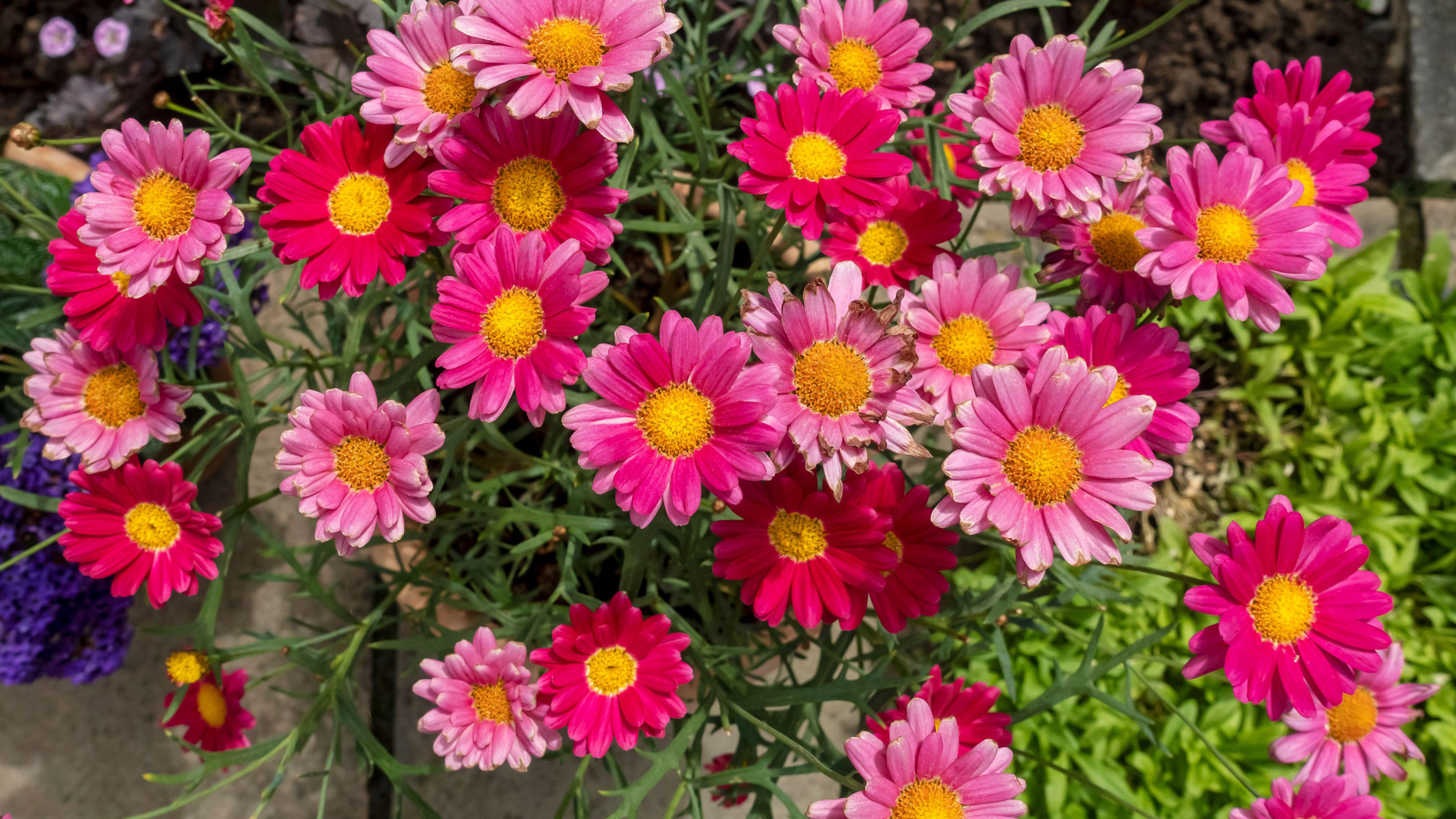

Marguerites (or Paris daisies) are small, short-lived and frost-tender shrubs. They are distinctive for producing masses of daisy-like blooms in summer, and sometimes flowering for much longer in milder regions.
Flowers typically appear in vibrant shades of red, yellow and pink, as well as bright white, as well as bicolor forms. Some of the prettiest varieties have petals with rings of color around a golden eye, whilst in others the flowers change color as they mature or as the temperature rises and falls.
These plants (genus Argyranthemum) are evenly rounded in shape, with new growth soon becoming woody and developing into a repeatedly branched evergreen shrub. Irregularly divided leaves vary from dark green to silvery grey, sometimes prettily split into slender divisions. Flowers can be single like daisies, crested or anemone-centered, with a crown of short petals in the middle of each flower, or double with a mass of petals.
Marguerites make ideal planting options for all manner of dynamic and delicate flower bed ideas, complementing quaint cottage schemes, container gardens or casual meadow-style arrangements.
In most areas, they are grown as ‘temp perennials’ (tender or half-hardy annuals), flowering prolifically through summer until the first frost kills them. So why not find out how to grow marguerites and enhance your beds, patios and borders with these easy-going profusions of color?

When and where to plant marguerites
Marguerites are classified as temp perennials (half-hardy annuals) and enjoy full sun in a west-facing or south-facing garden – although they are adaptable to a range of planting situations.
Happy as part of a gravel garden, sunny borders or coastal garden or as more formal cottage gardens, plus diverse container gardening schemes, their flowering longevity and vibrancy will depend primarily on regional hardiness zones and local exposure to warmth (or cold).
So think about where you live, as this will tell you how your marguerites will perform. In the coldest areas, they will flower through the summer until cut down by frosts in fall. Plants grown in Zone 8 will usually give you the longest season of bloom, as they can be planted out in spring, after the last frost, and produce flowers continuously for many months until fall frosts.
In zones 9 and 10, high peak summer temperatures can reduce flowering after a few colorful early weeks. However, flowering will pick up again as summer temperatures cool off.
As long as the soil is well drained and reasonably fertile, it doesn’t matter if it is acid, alkaline or neutral. Marguerites are tolerant of most soil types that are not waterlogged, and regular feeding will usually make up for soil that is not fertile. Just like other daisy-style long-flowerers like asters and echinacea, marguerites do best if planted in late spring. That said, they also do well if planted in early summer.
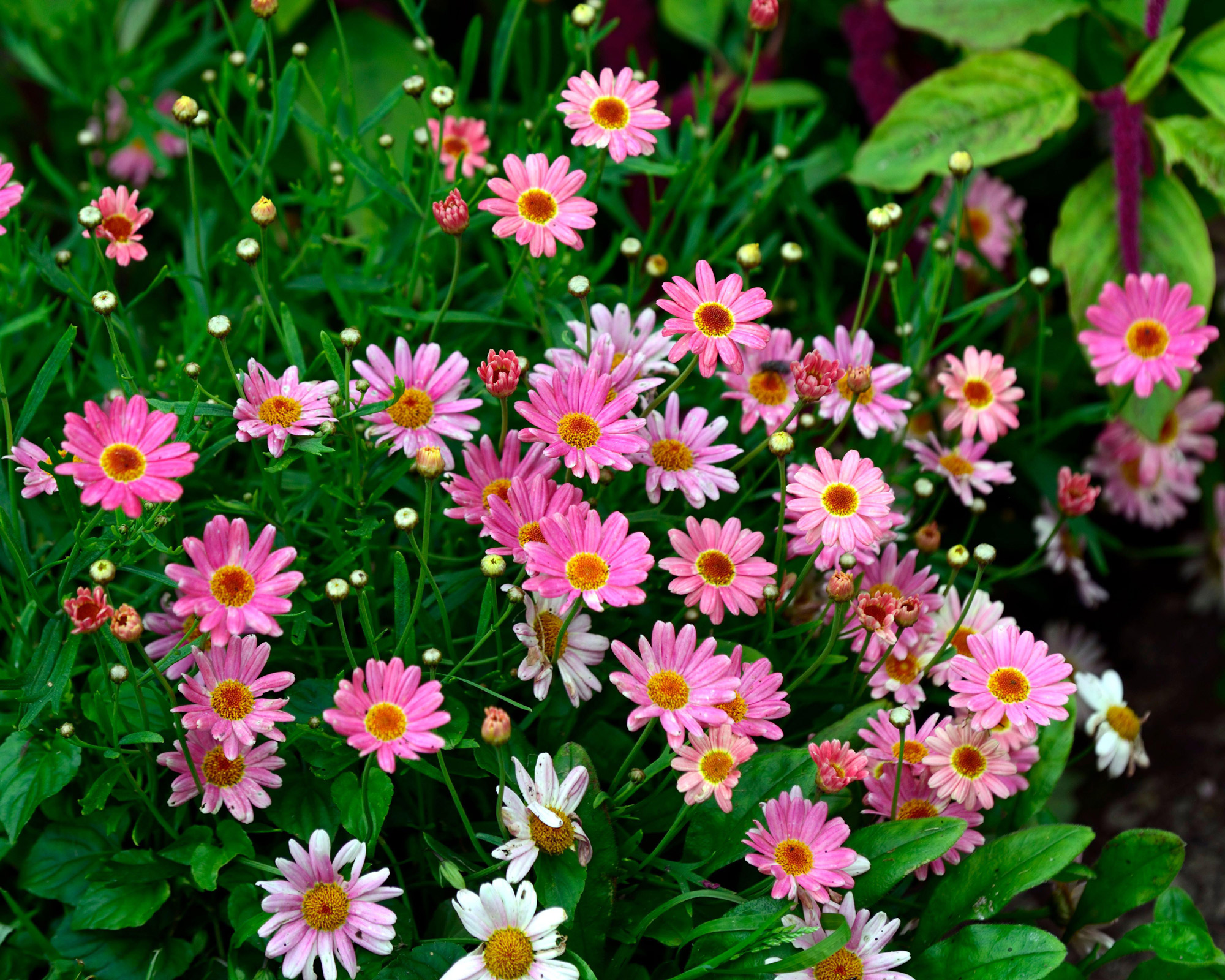
How to plant marguerites
There are no major techniques to master when learning how to grow marguerites, but a few basic planting principles can help you get more from your displays. First, you need to prepare the planting area. Make sure you get rid of weeds and large stones. If the soil is poor, amend with garden compost, rotted cow manure or other organic matter.
Marguerites need sunshine, and while they appreciate cooler midday conditions in hot zones, you need at least six hours of sun for prolific flowering. That said, they may still flower well in partial shade with a wall or fence to the side.
Thanks to their easygoing nature, marguerites are popular choices as part of cheerful low maintenance flower bed displays – as long as you can keep any chills at bay.
Plant after the last frost in your area, or in early spring in mild areas. In cold zones, marguerites can be planted in containers and kept in a cool but frost-free place, before being moved outside. That’s all you need to remember.
Simply water with liquid fertilizer before and after planting, and keep consistently moist until plants are established. Once settled, marguerites are drought-tolerant.
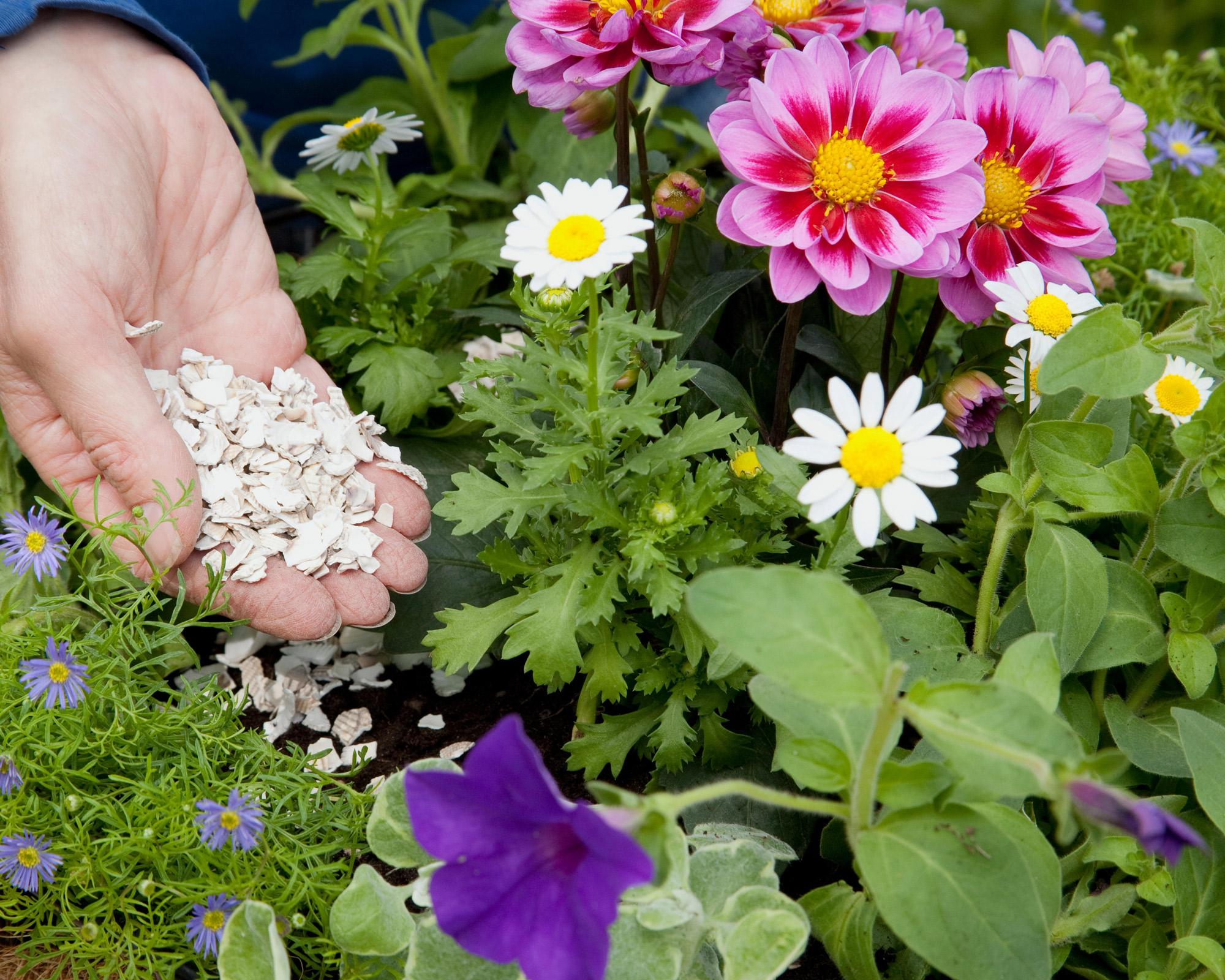
Growing marguerites in pots
Although marguerites are happy in beds and garden borders, it is also possible to cultivate dynamic flurries of blooms in containers. In fact, they are ideal choices for garden planters and pots – they are colorful and prolific and it is not difficult to create an attractive specimen quickly. If you want a flying start on your daisy-themed patio gardening ideas, there are two important factors to bear in mind.
First, some marguerite varieties are neat and bushy and may not reach more than 12-15in (30-38cm) in height. Compact varieties include the Madeira Series (nine colors), and the Aramis Series (a dozen colors).
Taller varieties may reach 3-4ft (90cm-1.2m) and these include the spectacular GranDaisy Series and the popular Butterfly Series. So it is important to match the size of the plant to the size of the containers. The plant label should provide advice on your choice of pot.
The other factor is feeding and watering plants. Marguerites are hungry plants and respond well to both. However, it is important that the soil in the container does not become waterlogged. Pots planted with marguerites should be set on pot feet to ensure that any surplus moisture can drain away easily. If your marguerite dries out in its pot, it may take repeated waterings for the moisture to re-wet the whole container.
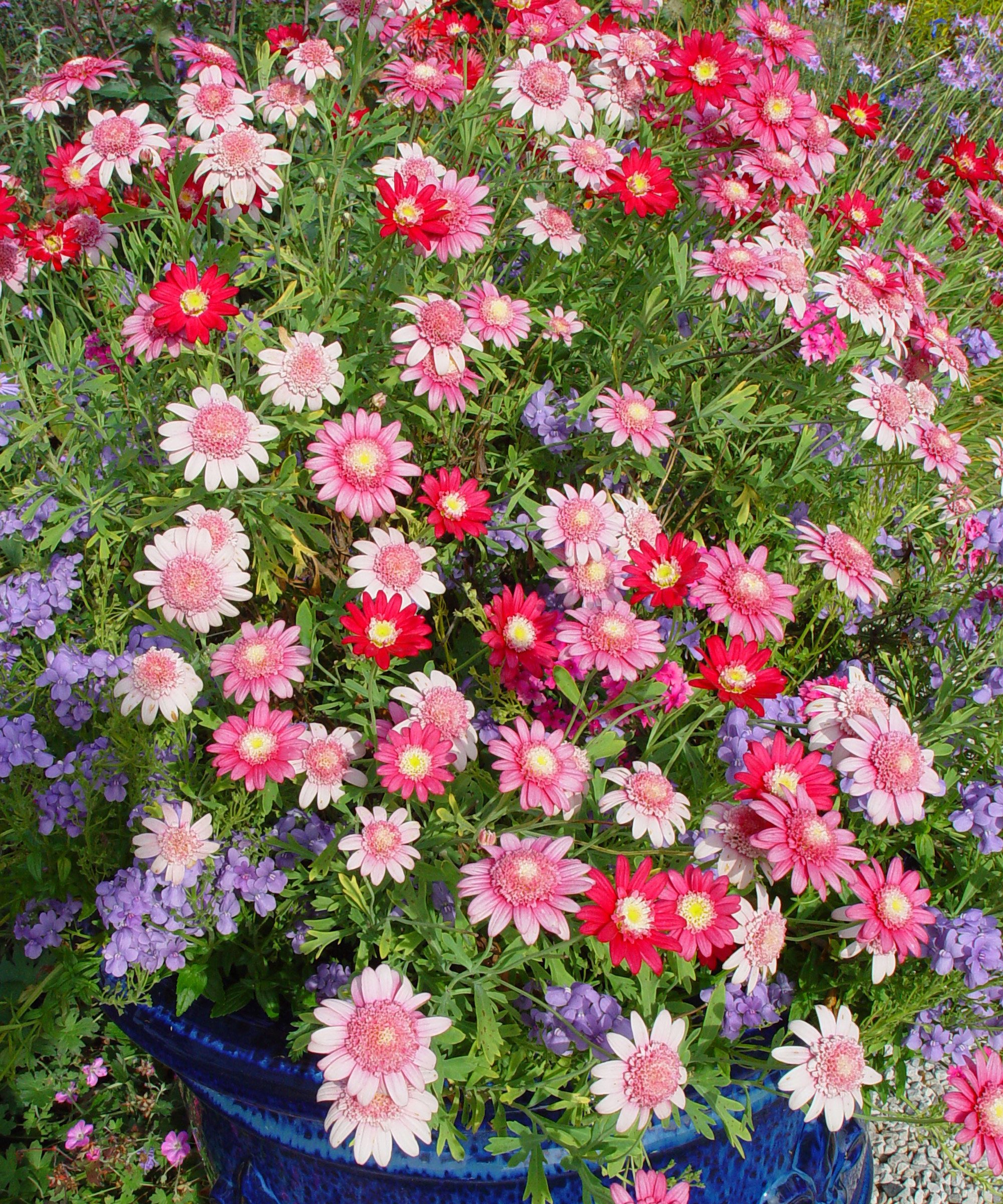
How to care for marguerites
Marguerites care is relatively straightforward. Indeed, no special care is needed to keep your marguerites flowering well. You may find that deadheading flowers will improve the look of your plants and help to keep your marguerites blooming for longer. That said, some plants will produce so many flowers that it can become quite time consuming, and this is not necessary to enjoy healthy marguerites.
A little pruning maintenance with your marguerites can also be a good way to keep them in tiptop condition. So grab your best secateurs and try a little shaping to create an evenly rounded plant. Prunings can sometimes be used as cuttings to make more plants.
Although marguerites are drought-tolerant, the best plantings rely on regular irrigation, so don’t skimp on watering, especially during dry spells. Fertilizing plants every two weeks also helps to boost flowering and ensures the longest flowering displays.
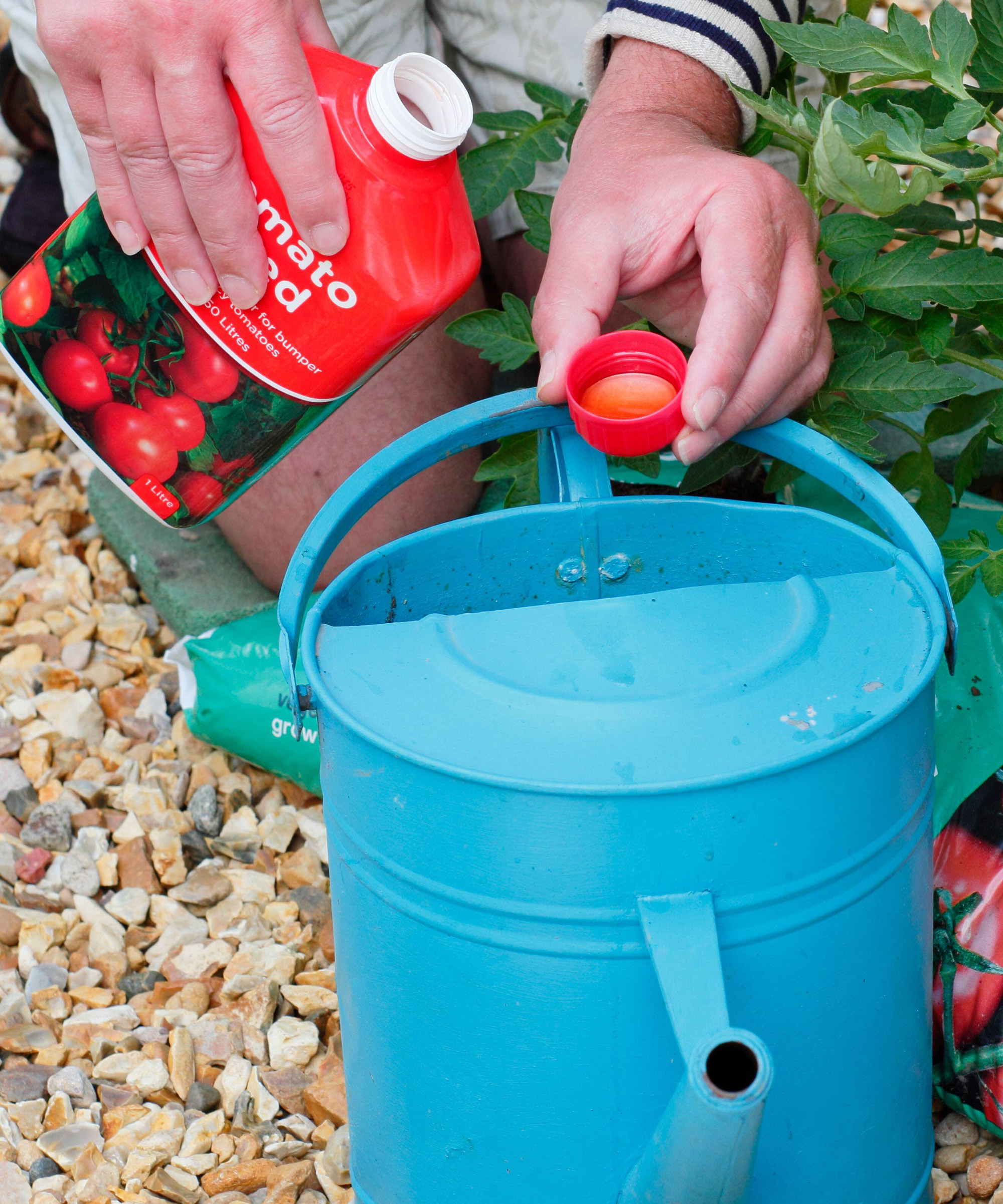
How to propagate marguerites
If you want to make more marguerites, the good news is that it’s quite straightforward. You don’t have to grow flowers from seeds, either – you can take cuttings from plants once they have reached a certain level of maturity and you know they are thriving. Marguerites root easily from cuttings taken from healthy new growth once plants are growing well.
Snip off shoot tips that are around 3-4in (7.5-10cm) long. If possible, choose shoots that are not carrying any flowers. However, if flowerless shoots are not available, simply snip off any flowers or buds. Cut cleanly under a leaf joint, then remove the leaves from the lower half of the cutting. Insert up to the lowest leaves in pots of fresh seed compost mix. Place four cuttings in a 4in (10cm) pot.
Water well, then cover with an upturned clear polythene bag. Stand in good light indoors, but not in direct sun. When roots start to appear through the holes in the base of the pot, move the rooted cuttings into individual pots, for planting outside after the last frost.
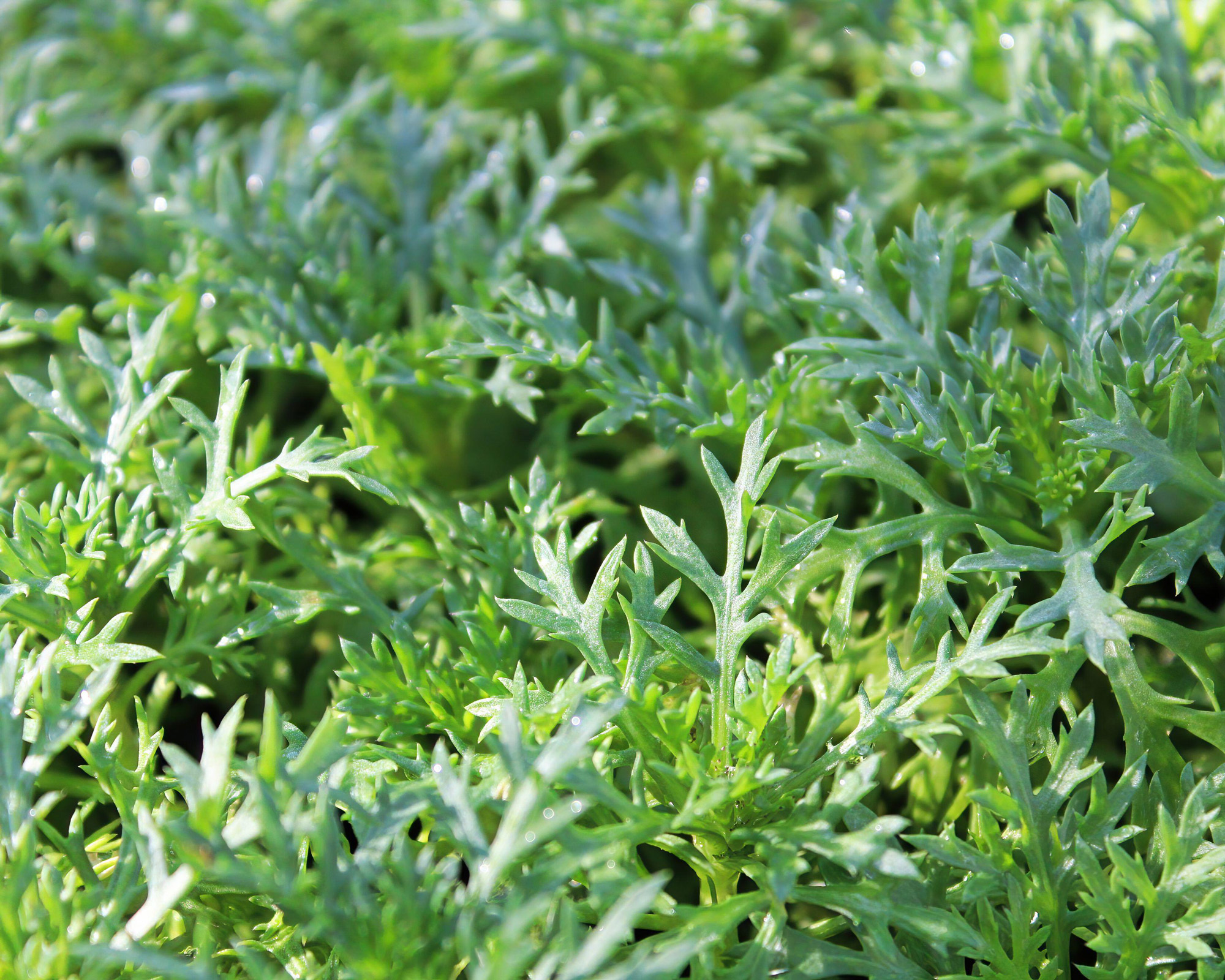
Problems with marguerites and how to solve them
Marguerites don’t suffer from too many problems, making them some of the easiest daisy-style plants to grow in your garden. If you grow yours in containers, just bear in mind that both the container and its compost can become so light in weight that the wind blows over the whole plant.
So acquaint yourself with the best time to water plants and make sure you don’t allow yours to dry out. Regular watering not only makes for strong growth, but can also be important for maintaining good stability.
Sometimes aphids can be a problem, though infestations that seriously weaken the plant are not often seen. Knowing how to get rid of aphids will help you keep on top of this problem. Use an organic insecticide if the problem becomes serious.
Marguerites are also sometimes attacked by leaf miner, a tiny insect that burrows under the surface of the leaf, making transparent tunnels. Leaf miner can spoil the look of the plant, but is not seriously damaging; snip off affected leaves. Otherwise, regular watering and feeding will prevent most problems.
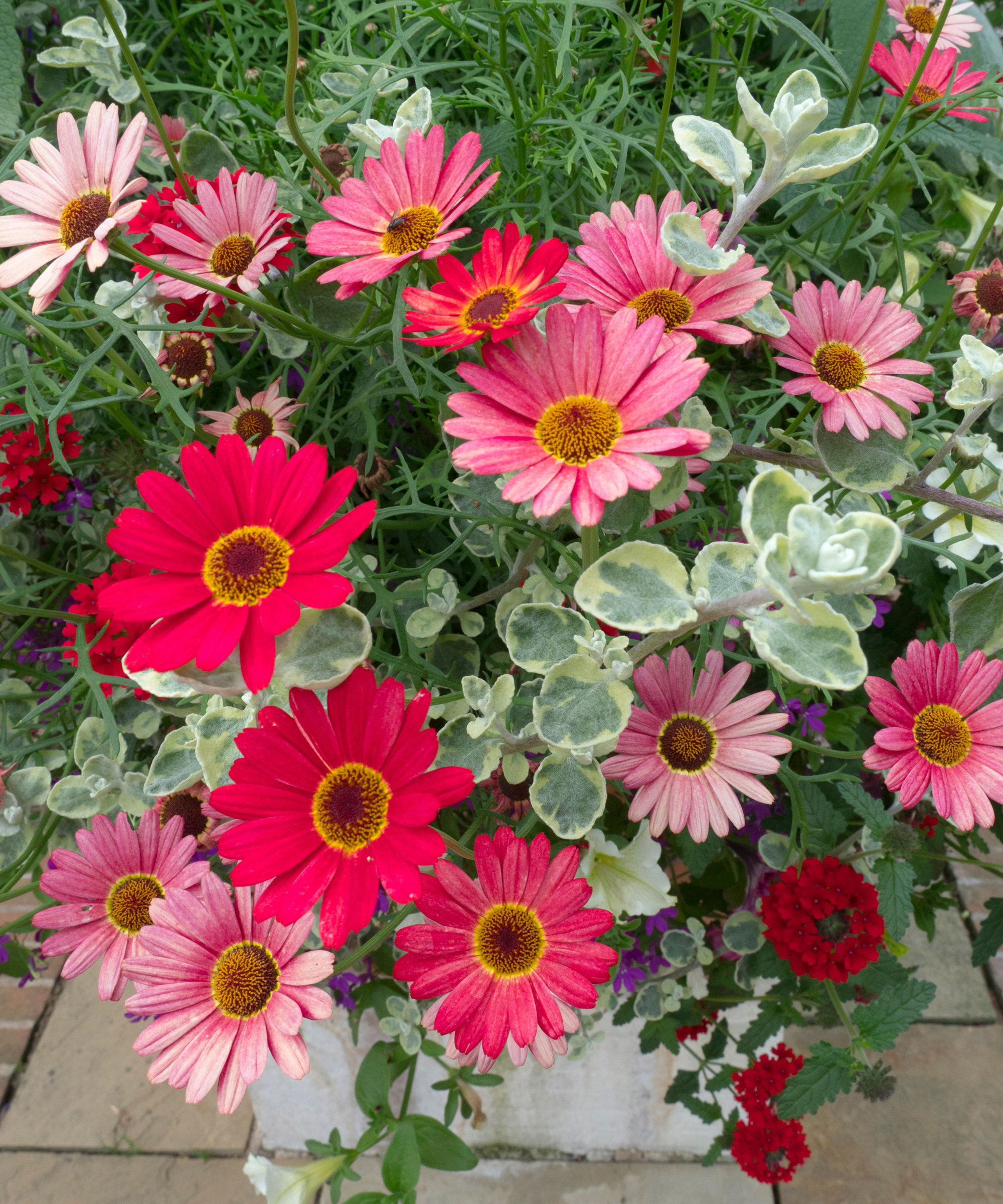
How many types of marguerites are there?
Marguerites are a group of 24 species of flowering plants. Some are ideal as cutting garden flowers, some work well in natural groupings, a few suit formal or cottage garden displays, and others are striking specimens for container growing. However, while there are many varieties to choose from, each with specific characteristics, there are three main types:
- With the first and main type, the flowers are like recognizable daisies. These single-flowered varieties feature a golden eye surrounded by a ring (or sometimes a double ring) of ray petals in a variety of red, yellow, white and pink shades such as ‘GranDaisy Pink Halo’.
- You can also get crested or anemone-centered varieties. These feature a crest of short, crowded petals in the middle of each flower. The crest can either be yellow or the same color as the petals. This type of marguerite daisies includes the variety ‘Vancouver’ (pictured).
- Finally, there are the double-flowered marguerites. These flowers present with a mass of petals, which are often shorter in the center. Some have a dahlia-style quality and tend to be less typically ‘daisy-like’ in appearance. ‘Raspberry Ruffles’ (below) is an example of this type.
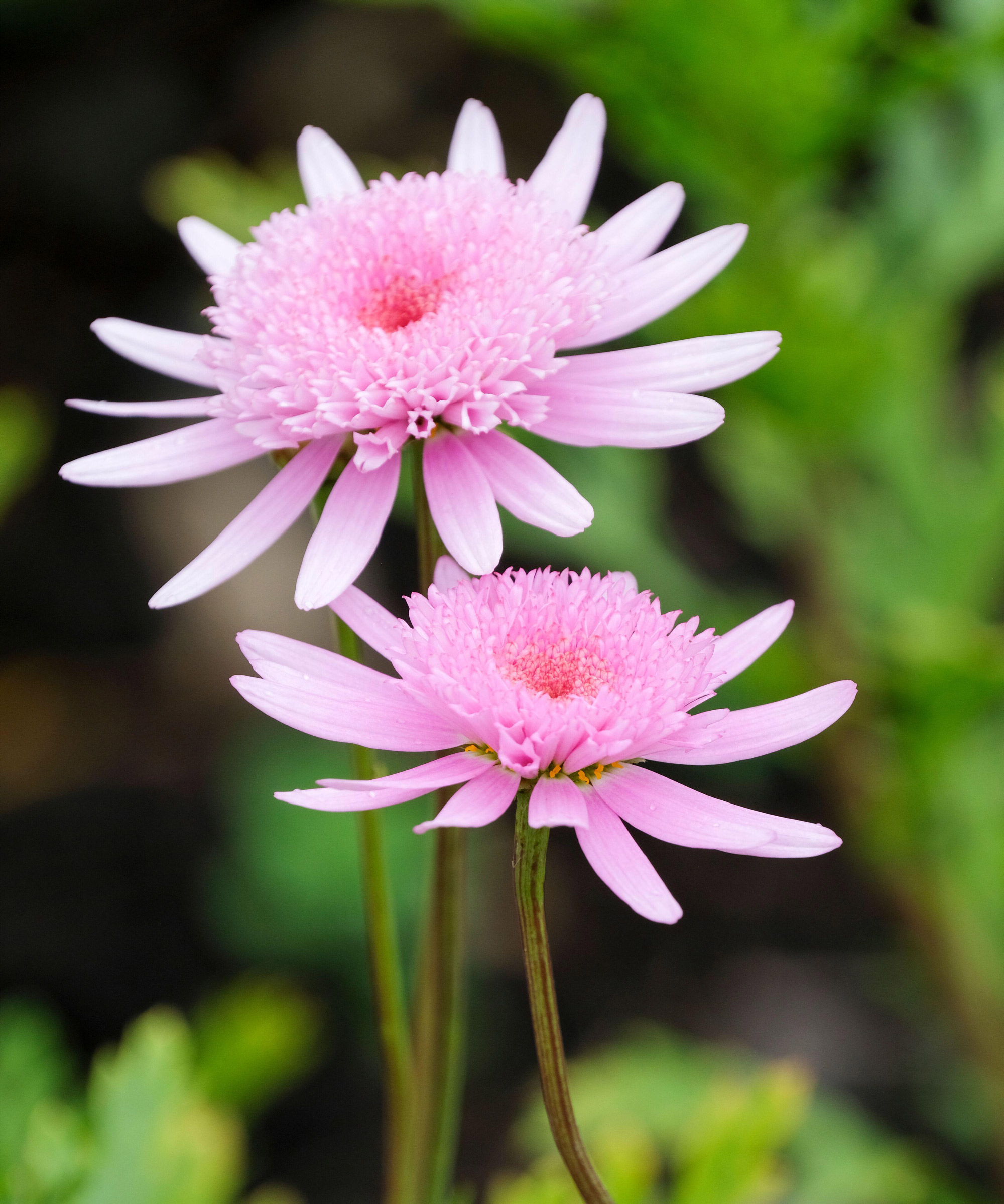
Should I pinch out my newly planted marguerites?
You may have heard that it is a good idea to pinch out newly planted marguerites. The truth is that it depends on which varieties you grow. Modern varieties such as the Madeira Series and Aramis Series are naturally dwarf types. These are low maintenance shrubs that will also branch well with no need for pinching. If part of the plant is damaged, it may need a little pinching and snipping to create a balance – that said, pinching is not usually necessary.
However, old varieties such as ‘Jamaica Primrose’ (yellow) and ‘Vancouver’ (soft pink) are different. These varieties are more vigorous and also tend to branch less naturally. However, they respond well to being pinched while still less than 6in (15cm) tall. When the whole plant reaches about 12-15in (30-38cm), they can be pinched again.
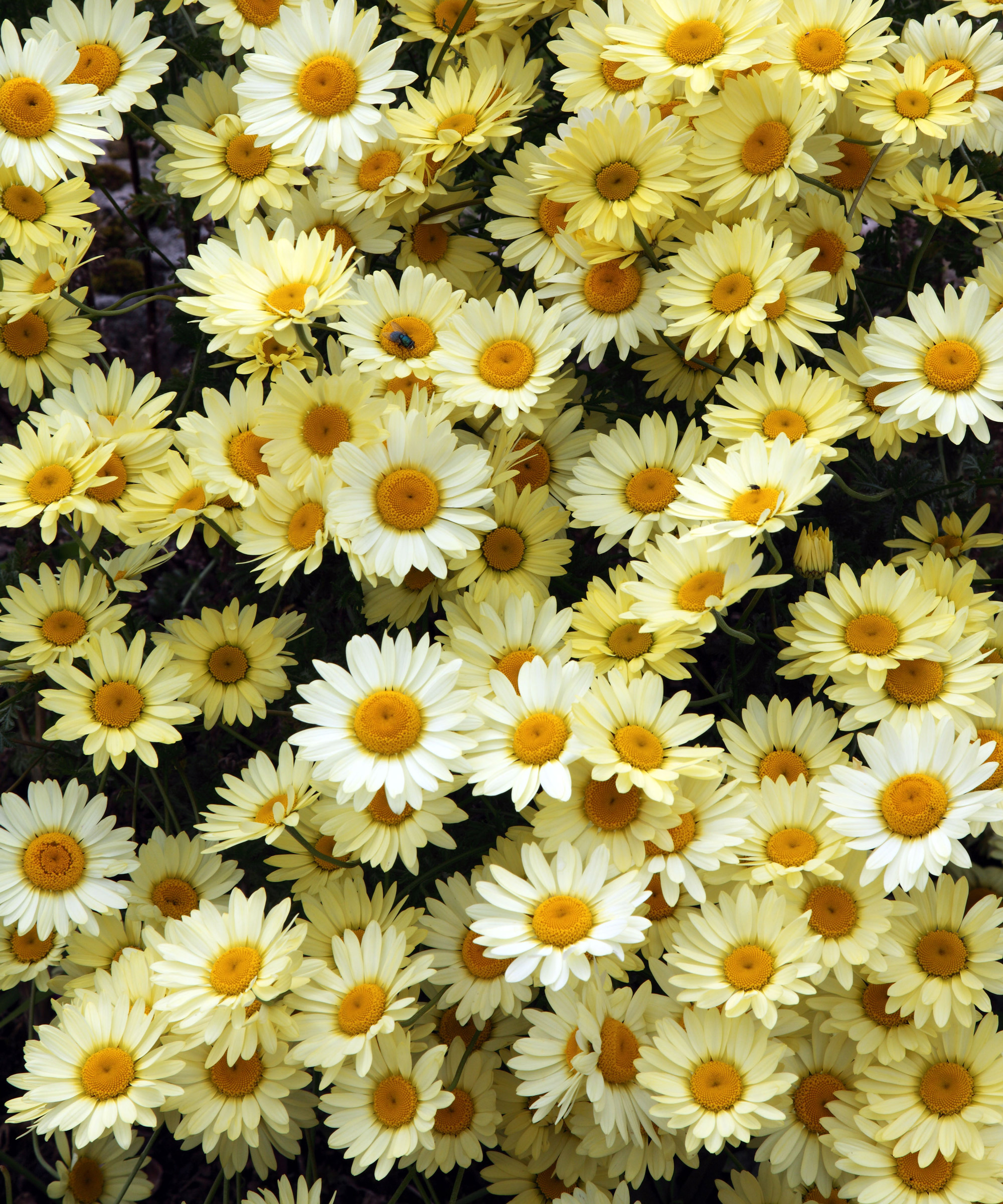
What zones do marguerites grow in?
Marguerites can grow well in a few different hardiness zones. They can grow to a respectable degree in a broad range of growing conditions, as long as the soil is well draining and there is an adequate amount of sunshine per day. While it is said that the main hardiness zones for marguerites are USDA 8-9 (RHS H2), the truth is they will grow in all zones from USDA 3-10.
In parts of California, for example, marguerites behave like shrubs and may flower for much of the year, perhaps taking a break for the hottest weeks of summer. At the opposite extreme, in the coldest zones, they will provide you with a few summer months of flowers after a late spring planting and then be killed by the first hard frosts of fall.
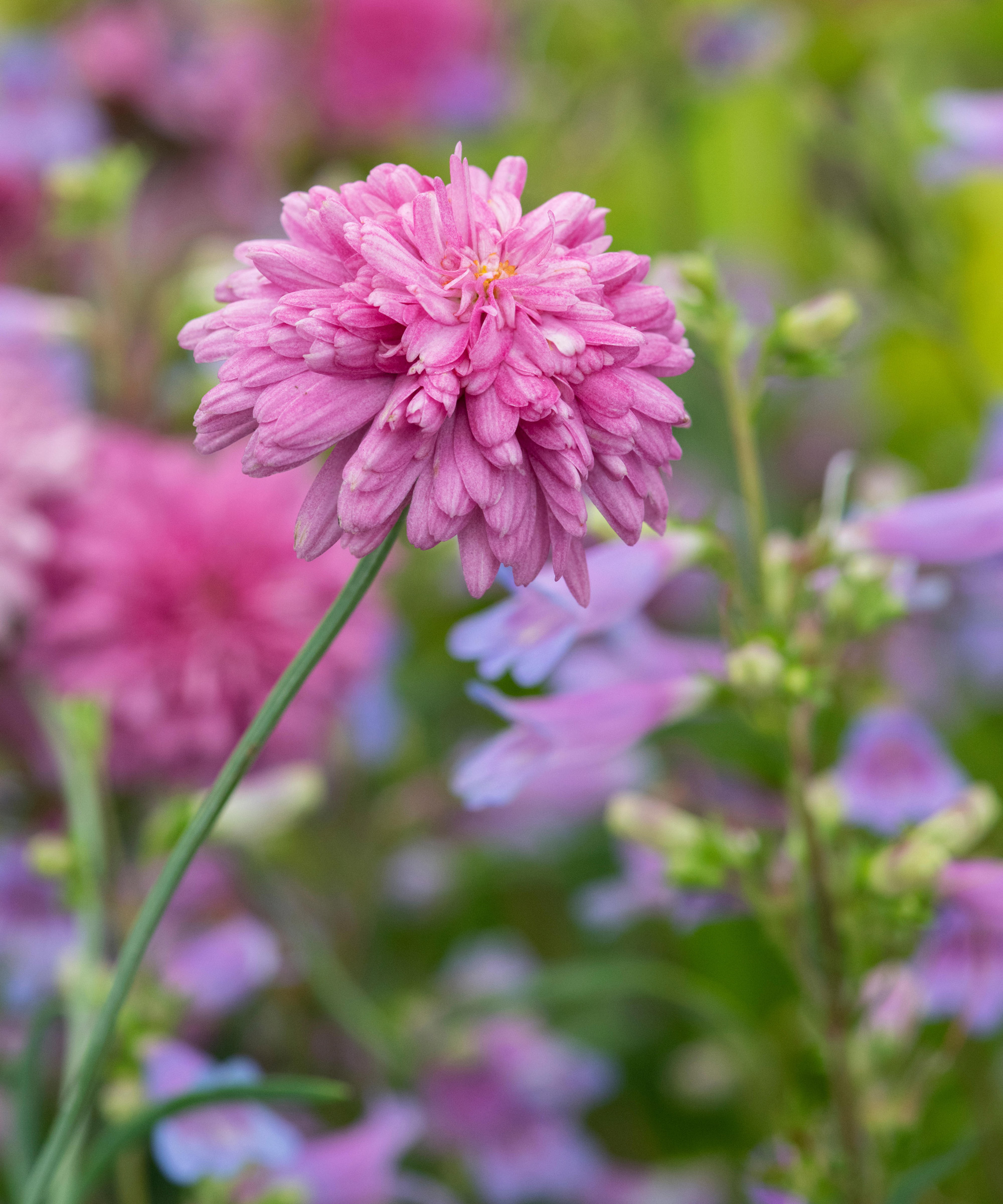
Where to buy marguerites as plants and seeds
Marguerites can be found in flower at retail nurseries in one- or two-gallon pots, and in big box stores. Check that the foliage is making dense growth, that the compost is moist, and that there are plenty of buds to come.
Plants trained as standards are sometimes offered, with a single upright stem 2-3ft (60-90cm) tall topped by a ball of foliage and flowers. These look well as specimens in containers. While commonly grown for free-form displays, a row of standard marguerites adds formality to the summer garden and works well with modern garden ideas, if required.
Smaller plants are sold via mail order in pints. You can also get marguerites as small plants and seeds online. Use our quick links to find varieties for your plot.
Where to buy marguerites in the US:
- Shop marguerites plants at Garden Crossings
- Shop marguerites plants at Home Depot
- Shop marguerites plants at Monrovia
- Shop marguerites plants at Proven Winners
- Shop marguerites plants at White Flower Farm
Where to buy marguerites in the UK:
- Shop marguerites seeds at Amazon
- Shop marguerites plants at Brookside Nursery
- Shop marguerites seeds at Chiltern Seeds
- Shop marguerites plants at Crocus
- Shop marguerites plants at Dobies
- Shop marguerites plants at Mr Fothergill’s
- Shop marguerites plants at Marshalls
- Shop marguerites plants at Suttons
- Shop marguerites plants at Thompson & Morgan

Graham Rice is a garden writer who has won awards for his work online, and in books and magazines, on both sides of the Atlantic. He is a member of a number of Royal Horticultural Society committees and the recipient of the 2021 Garden Media Guild Lifetime Achievement Award.
